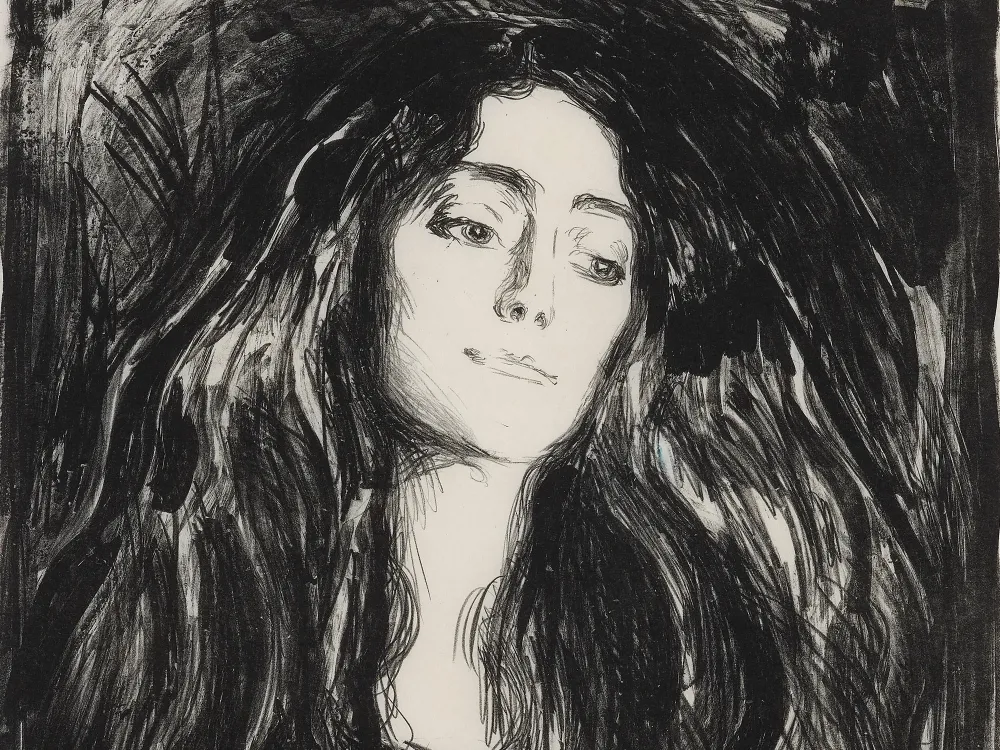Edvard Munch Is Known as the Painter of 'The Scream.' His Many Haunting Portraits Show That He Was Much More Than His Masterpiece
Edvard Munch Is Known as the Painter of ‘The Scream.’ His Many Haunting Portraits Show That He Was Much More Than His Masterpiece
Through 45 artworks made between the 1880s and the 1920s, a new exhibition spotlights the Norwegian artist’s sometimes divisive style of portraiture
The Brooch, Edvard Munch, 1902
Private collection / Peder Lund
Edvard Munch is best known for The Scream, a painting of a tortured human face unveiled in 1893. But the famous painting is only a small piece of the Norwegian artist’s oeuvre, which includes thousands of other works.
Munch created many portraits throughout his career, and 45 of them are now on display at London’s National Portrait Gallery. Titled “Edvard Munch Portraits,” a new exhibition spotlight’s his paintings of family, friends, commissioners, art collectors and the artist himself.
The new exhibition “shows Munch as being a more social person than is often assumed,” Alison Smith, the gallery’s chief curator, tells Reuters’ Marie-Louise Gumuchian. “It takes us beyond The Scream.”
Evening, Edvard Munch, 1888
Museo Nacional Thyssen-Bornemisza
Born in 1863, Munch endured bouts of illness throughout his childhood. As a bedridden 17-year-old, he wrote in his diary, “It is my decision now to become a painter.” He went on to explore themes such as love, death and loneliness throughout his 60-year-long career. Apart from The Scream, some of his most famous works are Madonna (1894) and The Sick Child
The new exhibition includes works from between the 1880s and the 1920s. It’s the first show dedicated to Munch’s portraits in England, and many of its featured artworks have never previously been displayed in the country. One of these, an 1892 portrait of a lawyer named Thor Lütken, illustrates both Munch’s style and social tendencies.
“It’s quite a monochromatic portrait … but if you look very closely, you can see how the sleeve merges into this sort of blue, black moonlit landscape, which is inhabited by two mysterious figures,” Smith tells Reuters. Munch was “very connected with the artistic and intellectual currents of his time,” but portraits like Lütken’s show how the artist also “sought the protection of people who were active in the areas of law, business and medicine.”
Thor Lütken, Edvard Munch, 1892
Munchmuseet / Sidsel de Jong
Munch’s style of portraiture was divisive. “When I paint a person, his enemies always find the portrait a good likeness,” the artist once said, per the Financial Times’ Jackie Wullschläger. “He himself believes, however, that all the other portraits are good likenesses except the one of himself.”
Munch often attempted to portray his subjects as flawed, complicated people. One portrait portrays his friend, the art critic Jappe Nilssen, who criticized the piece: “He has given full rein to his vicious side and could easily have painted a more beautiful portrait,” said Nilssen, per the Financial Times.
Munch also painted his psychiatrist, Daniel Jacobson, standing with his hands on his hips in front of red and yellow walls, and he depicted the Swedish playwright August Strindberg with a “demonic air,” per the Financial Times. The artist repainted this portrait after Strindberg expressed his disapproval. Upon seeing the second painting, Strindberg threatened to kill him.
Dr. Daniel Jacobson, Edvard Munch, 1908
SMK, National Gallery of Denmark / Jakob Skou-Hansen
“[Munch] always wanted to get beyond surface appearance to probe the inner psychology or motivations of an individual,” Smith tells Reuters. “So the portraits work on two fronts. On the one hand, they are representations of a particular sitter at a given moment in time, but also they offer insight into their inner world.”
The exhibition also includes early paintings of Munch’s family (such as a 1888 portrait of his sister Laura looking toward a fjord) and some depictions of women that emphasize feminine beauty (like The Brooch, a 1903 painting of the British violinist Eva Mudocci, who became Munch’s muse).
As Rosie Broadley, senior curator of the gallery’s 20th-century collections, says in a statement, “We’re excited to present this exhibition at the National Portrait Gallery to shine a new light on Munch’s deep social connections, and bring together portraits which have never been seen in the U.K.”
“Edvard Munch Portraits” is on view at the National Portrait Gallery in London through June 15, 2025.
Get the latest stories in your inbox every weekday.


